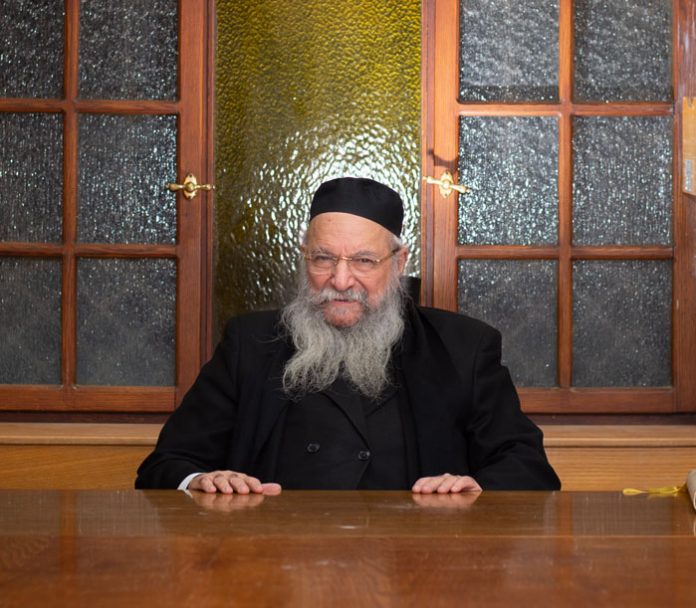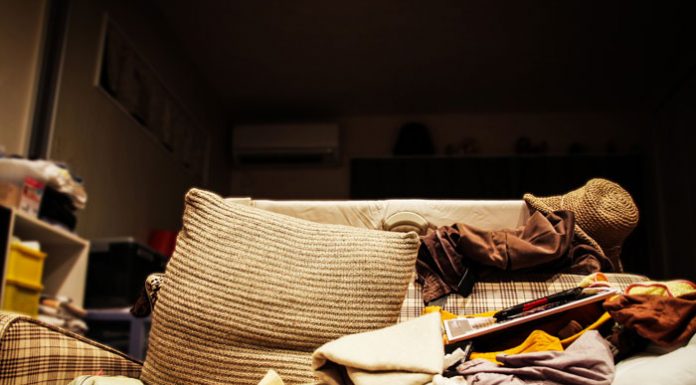My wife and children have stayed behind in a different part of Yerushalayim to participate in a Tu B’Shvat “Seder” as I hail a taxi late one rainy evening to Kikar Shabbos. I am off to meet with a renowned Kabbalist in his yeshivah, Ahavas Shalom, which is located in a cluster of buildings right next to the headquarters of the Eidah Hachareidis. I am very familiar with the neighborhood, having eaten almost every Friday night seudah in the home of Rav Yissachar Dov Goldstein, zt”l, on Rechov Rav Nachman M’Breslov when I was learning in the yeshivah of Rav Dovid Soloveitchik. Today, that same house is being used by one of Ahavas Shalom’s kollelim.
The central building in this complex, which includes a large beis midrash, is imposing and impressive. I meet with the esteemed head and founder of Ahavas Shalom, Rav Yaakov Moshe Hillel, in a study room that is used for the teaching of Kabbalah on the second floor.
Born in Mumbai, India, to Moshe Hillel (the grandson of Rav Avraham Hillel, who served as a rav in Iraq), Rav Yaakov Hillel learned in the Gateshead Yeshiva in England. He subsequently emigrated to Eretz Yisrael and learned in the Ponevezh Yeshiva in Bnei Brak under Rav Shach. He later married the daughter of Rav Yitzhak Ohana, the chief rabbi of Kiryat Shmona. A prolific author of sefarim based on Kabbalah, many of the titles of his works contain the word “Hayam,” an acronym standing for Hillel Yaakov Moshe. He also founded a girls’ seminary, Bnos Elisheva, in 2002, and heads a network of yeshivos and kiruv institutions. Among his foremost talmidim are Rav Daniel Frisch and Rav Shimshon Pincus.
Rav Hillel has an imposing, regal bearing, but after some initial hesitation he opens up to me. I offer to speak in Hebrew, but he tells me that he is equally comfortable conversing in English.“It is a big kavod to come to this holy place,” I tell him after being seated, “and especially to be in the room where the Rav gives shiurim on Kabbalah. Yerushalayim once had famous yeshivos that were centered around Kabbalah. But it seems that in Ahavas Shalom the focus is on nigleh, while nistar seems to be mei’achorei hapargod.”
“I wouldn’t put it like that,” he corrects me gently. “Ahavat Shalom started off 45 years ago as a shiur I used to say in Kabbalah and then took off. From there we established kollelim, worked with baalei teshuvah and opened a Bais Yaakov. But the kernel of everything was my shiurim in nistar. It’s not at all secondary, although some may think so because I don’t want to make it an issue, and I certainly don’t want it to be tainted by show business. The derech we have from our rebbes is not to publicize Kabbalah, and certainly not to make it into a source of income.
“We have nearly 5,000 avreichim in our network—approximately 1,600 in the full-day kollelim and 3,200 in the evening kollelim. Everything they learn is nigleh. Wherever I go to raise money—I have a budget of $4 million a month—I don’t even mention this room where we learn Kabbalah. The shiurim here are considered a yeshivah shel maalah for chashuve rabbanim and gedolei Yisrael, which means that attendance is very limited.
“Even though my budget is probably equivalent to that of some of the biggest yeshivos in the world I raise every penny on my own, and I never have a fundraising dinner. I believe that publicity is harmful, and I am somewhat worried about this interview as well.
“When a gvir wants to make a hachnasas sefer Torah, he comes to me and I write a letter, and they bring photographers to take pictures. I give the photographers mussar. I say, ‘Eighty years ago the gedolim were made by other gedolim. For example, Rav Chaim Ozer said about the Chazon Ish, “Ari alah miBavel.” Today, the photographers make the gedolim.’”
“I guess that by teaching avreichim, the Rav is making gedolim. Do they learn Gemara, Rashi and Tosafos?” I ask.
“Yes, or poskim, depending on their age. The younger avreichim learn more yeshivish, and when they’re 28 or 29 they start to include more halachah, but it’s from the sugyos of the Gemara. We made a siyum for 3,000 avreichim and had all of the gedolei Yisrael in attendance. Rav Chaim Kanievsky was there for two hours. Then there were Rav Wosner, Rav Shternbuch, the Chevron rosh yeshivah, the Mirrer roshei yeshivah, Rav Baadani, the Sadigura Rebbe, Rav Shalom Cohen and Rav Ezrachi. Even Rav Dov Landau—who doesn’t go anywhere—participated.”





















